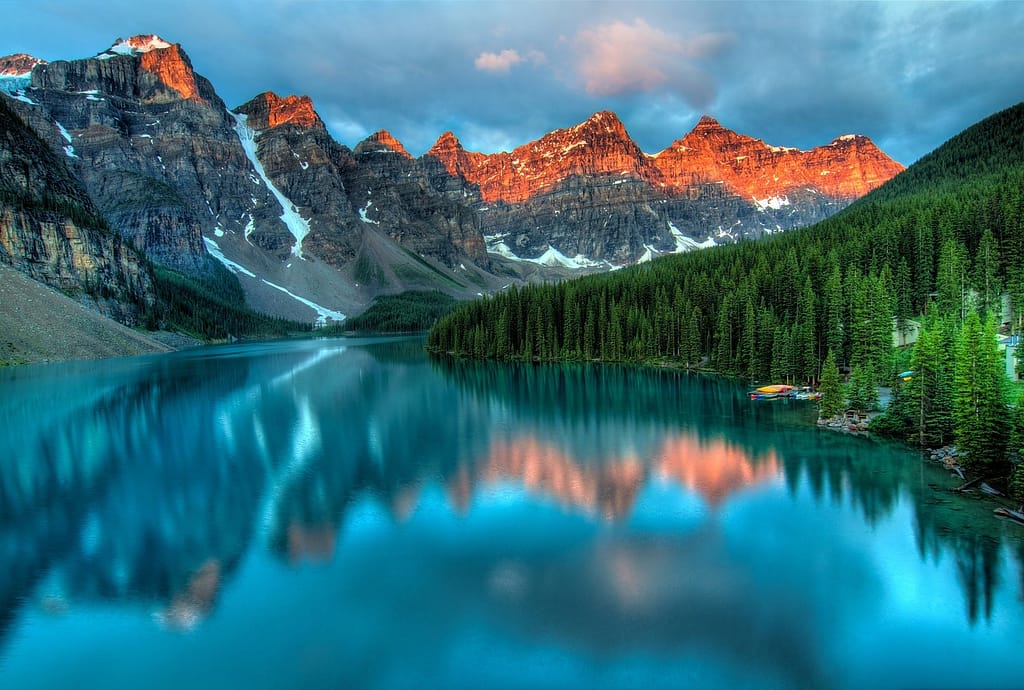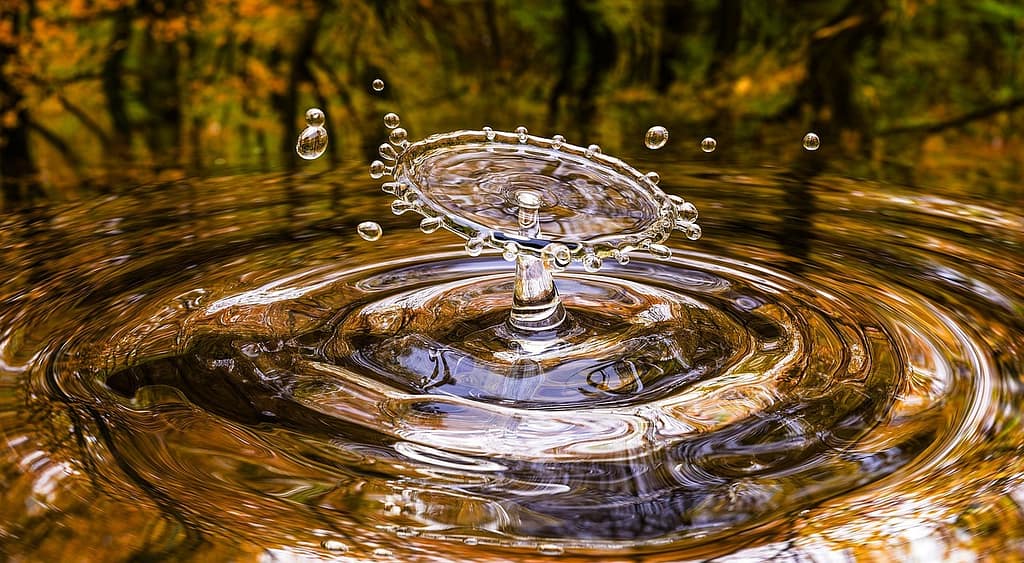Our planet is a breathtaking mosaic of diverse ecosystems, each teeming with unique life forms and functioning as a complex and interconnected web. From the snow-capped peaks of mountain ranges to the vibrant coral reefs hidden beneath the ocean’s surface, nature offers a constant display of wonder and intrigue.

A Tapestry of Ecosystems
- Soaring Mountain Ranges
Mountain ranges, with their jagged peaks scraping the sky, are some of the most awe-inspiring natural wonders. These colossal giants were sculpted by powerful geologic forces over millions of years, and their slopes provide a habitat for a surprising variety of life zones.
From the hardy mountain goats that surefootedly navigate treacherous cliffs to the delicate wildflowers clinging to rocky crevices, mountain ecosystems are a testament to nature’s remarkable ability to adapt and thrive in harsh conditions.
- Lush Rainforests: Jungles Teeming with Life
Rainforests, with their dense canopy of trees and lush undergrowth, are the lifeblood of our planet. They act as giant carbon sinks, absorbing vast amounts of carbon dioxide and releasing oxygen, playing a critical role in regulating the Earth’s climate.
Teeming with an incredible diversity of plant and animal life, rainforests are home to everything from towering trees reaching hundreds of feet tall to brightly colored birds flitting through the canopy and silent predators stalking the forest floor. The intricate relationships between these species create a vibrant and complex ecosystem.
- Sparkling Oceans: A World Beneath the Waves
The vast oceans cover over 70% of our planet’s surface and hold a wealth of mysteries. From the playful dolphins leaping through the waves to the majestic whales migrating across vast distances, the oceans are teeming with an incredible diversity of life.
Coral reefs, with their vibrant colors and teeming ecosystems, are vital to the health of the oceans. They provide a habitat for countless fish species, while also acting as a barrier against waves and storms.
The deep sea, shrouded in darkness and with immense pressure, remains largely unexplored. Yet, we know it harbors fascinating creatures adapted to survive in these extreme conditions, like bioluminescent organisms that create their own light.
A Celebration of Biodiversity
Having explored the diverse ecosystems that make up our planet, let’s delve deeper and celebrate the incredible variety of life that thrives within them.
- Majestic Mammals
Mammals, with their warm fur or blubber, come in all shapes and sizes, from the hulking elephants that roam the savannas to the tiny shrews that dart through the undergrowth. They play a vital role in their ecosystems, some acting as herbivores that graze on plants, while others are skilled predators that help keep prey populations in check.
Did you know? The blue whale, the largest animal on Earth, can grow up to 100 feet long and weigh over 200 tons!
- Dazzling Birds
Birds, with their vibrant plumage and ability to take flight, have captivated humans for centuries. From the majestic eagles soaring high above the mountains to the tiny hummingbirds flitting between flowers, birds fill the sky with color and song.
Many bird species play a crucial role in pollination, helping plants reproduce by transferring pollen between flowers. Their songs add a beautiful melody to the natural world, and their intricate courtship rituals are a marvel of nature.
- Creepy Crawlies: The Essential Underdogs
While some may find them unpleasant, insects and other invertebrates are essential to the health of our ecosystems. They make up the vast majority of animal life on Earth and perform a variety of critical functions.
Insects, for example, are vital pollinators, ensuring the reproduction of many flowering plants. They also serve as a food source for countless birds, reptiles, and mammals. Even decomposers, like beetles and worms, play a crucial role in breaking down dead organisms and returning nutrients to the soil.

The Interconnected Web of Life
The natural world is not simply a collection of individual organisms; it is a complex web of interconnected relationships. Each species plays a role in maintaining the delicate balance of the ecosystem.
- The Delicate Balance: Predator and Prey
The relationship between predator and prey is a constant dance in the natural world. Predators rely on prey for sustenance, while prey species have developed various adaptations to avoid becoming a meal. This constant struggle helps to maintain healthy populations of both predators and prey.
For example, lions hunt zebras on the African savanna. Zebras, in turn, have evolved keen eyesight and hearing to detect predators, as well as the ability to run fast to escape danger. This predator-prey relationship helps to keep zebra populations in check and prevents them from overgrazing the savanna.
- Symbiosis: A Mutually Beneficial Dance
Symbiosis is a fascinating phenomenon where two or more species live in a close and often interdependent relationship. There are several types of symbiosis, but some of the most common include mutualism, where both species benefit, commensalism, where one species benefits while the other is neither harmed nor helped, and parasitism, where one species benefits at the expense of the other.
An example of mutualism is the relationship between clownfish and anemones. Clownfish live among the stinging tentacles of anemones, which provide them with protection from predators. In return, clownfish help to scare away predators and parasites from the anemone.
- The Vital Role of Decomposers: Nature’s Recycling Team
Decomposers, such as fungi and bacteria, may not be the most glamorous creatures, but they play a vital role in the natural world. They break down dead organisms and return nutrients to the soil, making them available for plants to use. Without decomposers, dead organisms would pile up, nutrients would become locked away, and the cycle of life would grind to a halt.
Nature’s resilience and the intricate relationships between all living things are truly awe-inspiring. In the next section, we will explore the threats our natural wonders face and what we can do to ensure their survival.
Preserving Our Natural Wonders
The breathtaking beauty and intricate balance of our natural world face a multitude of threats. Human activity, including deforestation, pollution, climate change, and invasive species, is pushing many ecosystems to the brink of collapse.
The Threats We Face
- Deforestation: The clearing of forests for agriculture, logging, and development destroys vital habitat for countless species and disrupts the delicate balance of ecosystems. Forests also play a crucial role in regulating the Earth’s climate, and deforestation contributes to increased greenhouse gas emissions.
- Pollution: Pollution from industrial waste, agricultural runoff, and everyday activities like driving cars contaminates our air, water, and soil. This pollution can have a devastating impact on wildlife, making them sick or killing them outright.
- Climate Change: The Earth’s climate is changing at an unprecedented rate due to human activities that release greenhouse gasses. This is causing rising sea levels, more extreme weather events, and changes in temperature and precipitation patterns. These changes are disrupting ecosystems and threatening the survival of many species.
- Invasive Species: Invasive species are plants or animals that are introduced into an environment where they are not native. They can outcompete native species for resources and disrupt the balance of the ecosystem.
Sustainable Solutions: What We Can Do
The good news is that there are things we can do to address these threats and ensure the survival of our natural wonders for generations to come. Here are a few ideas:
- Reduce our consumption: By consuming less, we can help to reduce the demand for resources that contribute to deforestation and pollution. This means buying fewer things, choosing products made from sustainable materials, and avoiding waste.
- Support sustainable businesses: Look for businesses that are committed to sustainable practices, such as using recycled materials or reducing their carbon footprint. By supporting these businesses, we can send a message that sustainability matters.
- Get involved in conservation efforts: There are many organizations working to conserve our natural world. You can volunteer your time, donate money, or raise awareness about the importance of conservation.
- Make sustainable choices in your daily life: There are many things you can do in your daily life to reduce your impact on the environment. This includes things like conserving energy, recycling and composting, using public transportation or riding a bike, and planting native plants in your garden.
By working together, we can make a difference and ensure that future generations can experience the wonders of the natural world.

Conclusion: Living in Harmony with Nature
Our planet’s natural wonders are not just beautiful landscapes; they are the foundation of life on Earth. They provide us with clean air and water, food, resources, and countless other benefits. We have a responsibility to protect these wonders for ourselves and for future generations.
By understanding the threats our natural world faces and taking action to address them, we can create a more sustainable future where humans and nature can thrive in harmony.
FAQs
- What is biodiversity?
Biodiversity is the variety of life on Earth, at all levels, from genes to species to ecosystems.
- Why is biodiversity important?
Biodiversity is essential for the health of our planet. A diverse ecosystem is more resilient to change and can provide a wider range of benefits to humans.
- What are some of the effects of climate change on natural wonders?
Climate change is causing rising sea levels, more extreme weather events, and changes in temperature and precipitation patterns. These changes are disrupting ecosystems, causing glaciers to melt, and threatening the survival of many species.
- What can I do to reduce my carbon footprint?
There are many things you can do to reduce your carbon footprint, such as using energy-efficient appliances, driving less, and eating less meat.
- How can I get involved in conservation efforts?
There are many organizations working to conserve our natural world. You can volunteer your time, donate money, or raise awareness about the importance of conservation.





Pingback: Test your knowledge with our Earth Day Quiz - Techy Tempest
Pingback: Understanding Topsoil: Everything You Need to Know - Techy Tempest
Pingback: Understanding the Photosynthesis Equation: A Comprehensive Guide - Techy Tempest